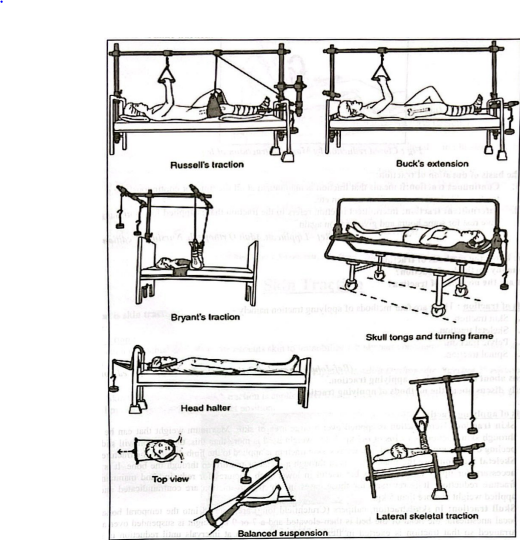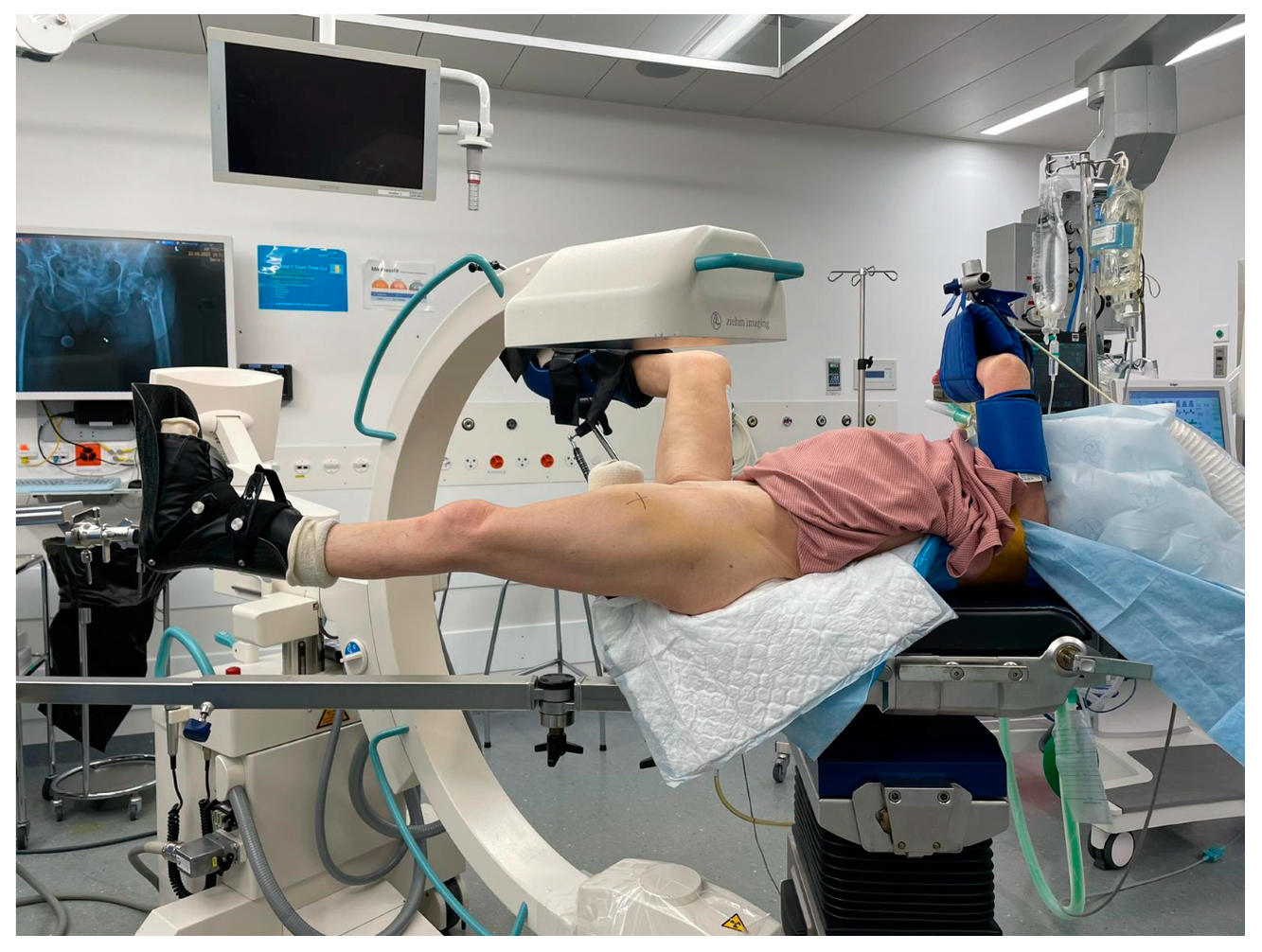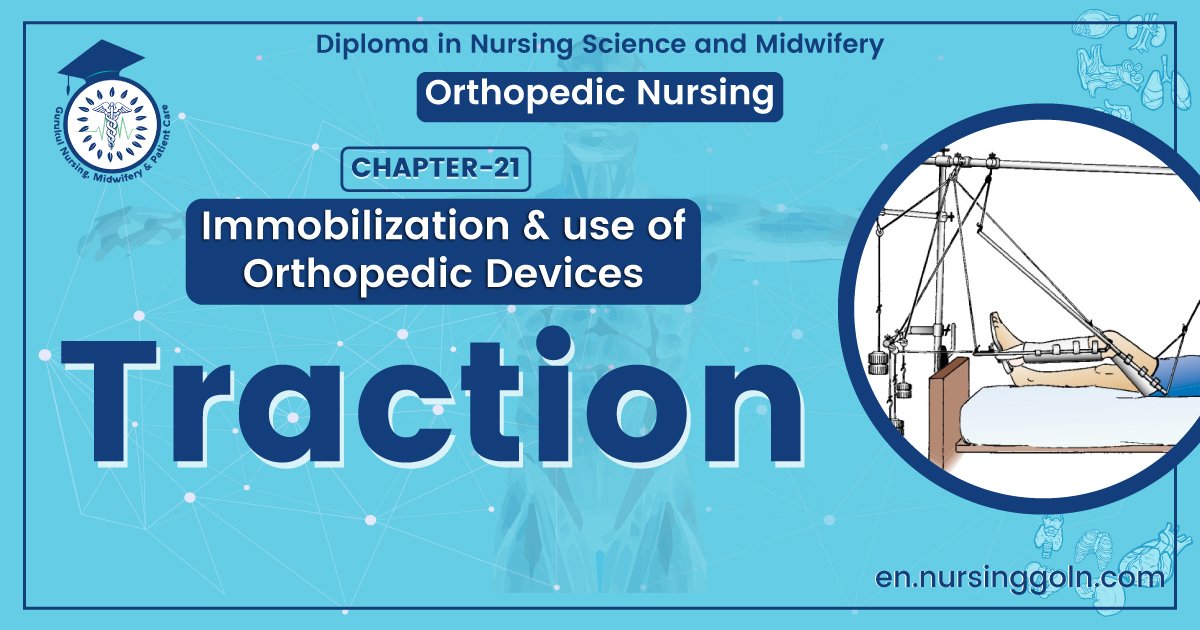Defination of Traction – An orthopedic nurse is a nurse who specializes in treating patients with bone, limb, or musculoskeletal disorders. Nonetheless, because orthopedics and trauma typically follow one another, head injuries and infected wounds are frequently treated by orthopedic nurses.
Ensuring that patients receive the proper pre-and post-operative care following surgery is the responsibility of an orthopedic nurse. They play a critical role in the effort to return patients to baseline before admission. Early detection of complications following surgery, including sepsis, compartment syndrome, and site infections, falls under the purview of orthopedic nurses.
Defination of Traction
History of traction:
Traction has been widely used as a medical treatment in orthopaedics foe more than 3,000 years. The Aztecs and ancient Egyptians used manual traction and splints made of bark of tree branches. Hippocrates (460-377 B.C) gave the explicit instructions in his writings concerning the treatment of fractures advocated the use of traction. For treatment of a fractured
humerus, The best plan is to put round the arm a board and soft skin broad shawl, and hang some great weight on it, so as to produce moderate extension (Naylor, 1998).
Definition of traction:
Traction is the exertion of the pulling force a that applied to a fractured bone or dislocated joint to maintain proper position and facilitate to healing.
Or
Traction can be applied as an alternative to surgery, is used to ensure proper positioning of an affected extremity and can be used in the correction of deformity.
(Ref-Lippincott, Adult Orthopedic Nursing, I” edition,P-155)
Or
Traction is the act of drawing or pulling anything over a surface.
Or
Traction is the application of a pulling force to a part of the body.
(Ref-SN Nanjunde Gowda’s “Foundations of Nursing” 1′ edition, P-242)
Or
Traction is the application of a pulling force to an injured or diseased part of the body or an extremity with counter traction (a pull in the opposite direction)
(Ref-Luckmann and Sorensen, Medical-Nurgical Nursing, 2nd edition, P-1664)
Purposes of traction:
1. To reduce fracture and realign bone fragments.
2. To maintain skeletal length and alignment.
3. To reduce and treat dislocation.
4. To immobilize to prevent further soft tissue damage.
5. To prevent the development of contracture.
6. To relieve muscle spasms.
7. To lessen deformity.
8. To rest a diseased joint.
9. To improve the function of the joint.
10. To hold the bone in correct positions.
(Ref-Lippincott, Adult O rthopedic Nursing, 1″ edition,P-155)
Types of traction:
1. Manual traction: It is applied by the hand, as when a doctor reduces a fracture.
2. Fixed traction: Fixed traction is traction between two fixed points. The fixed traction is that supplied by the Waston Jones abduction frame, in which the pall of skin extensions made from strapping are tied to extension bows is countered by the pressure of a groin strap. E.g. Thomas bed splint.
3. Balance Traction: Balance traction is traction exerted against a weight. Extension tapes are tied to a cord which carries a weight running over a pulley fixed to the elevated foot to the elevated foot end of the bed.
Other types of traction:
1. Some type of traction may be described as straight or running traction that exerts a pull on the affected part but does not provide a balance support by means of a. Hammock or splint.
- Buck’s extension,
- Rubber surface traction,
- Bryant traction.
2. In some type of traction, the extremity has traction applied & is then supported by means of a hammock or splint held in place by balance weight attached to an overhead bar.
a) Russel traction,
b) Suspension traction,
c)Dunlop traction.
3. In this type of traction are applied with some types of fitted apparatus, such as a correct, head halter or anklet.
- Head traction.
- Pelvic traction.
- Ankle traction.

Or
A) On the basis of methods of application of traction:
1) Manual traction: Manual traction is accomplished by a person hand exerting a pulling force. It is utilize to reduce fracture and dislocation and apply a steady pull

B) On the basis of duration of traction:
1. Continuous traction:It means that traction is maintained at all the time or continuously. e.g gallows traction, Skeletal traction, Skin traction etc.
2. Intermittent traction: Intermittent traction refers to the traction that is applied for short duration and give rest for some hours and give traction again.
(Ref-Lippincott, Adult O rthopedic Nursing, I edition,P-155)
Methods of traction: There are four methods of applying traction namely –
1. Skin traction.
2. Skeletal traction.
3. Pelvic traction.
4. Spinal traction.
(Ref-John Ebnezar’s “Orthopaedics for Nurses” 4″ edition,P-65)
Methods of applying traction:
1) Skin traction: Here traction is applied over a large area of skin. Maximum weight that can be applied through skin traction is 15 Ibs or 6.7 kg. If the weight used is more than this, the traction will slide down peeling off the skin. When used in fractures, skin traction is applied to the limb distal to the fracture site.
2) Skeletal traction: are the traction is given through a metal or pin driven through the bone. It is seldom necessary for upper limb fractures but useful in lower limb fractures for reducing and maintaining the fracture reduction. It is reversed for those cases in which skin traction are contraindicated and if the applied weight is more than 5 kg.
3) Skull traction: In skull traction, calipers (Crutchfield tong) are inserted into the temporal bones under local anesthesia; the head of the bed is then elevated and a 7 or 9 kg weight is suspended over a pulley, arranged so that traction is exerted in flexion. X-Ray are taken at intervals until reduction is secured. Traction is continued for from four to eight weeks, depending on the stability of the reduction and the general condition of the patient.

(Ref-John Ebnezar’s “Orthopaedics for Nurses”, 4″ edition,p-124-126)
Complications of traction:
1. Infection at pin site.
2. Non-union Delayed union.
3. Neuro vascular damage.
4. Skin breakdown.
5. Dermatitis under skin traction.
6. Urine retention, constipation, UTI.
7. Wound infection.
8. Oedema, thrombophlebitis.
9. Nerves and blood vessels can be impaired. (If traction wrappings are too tight) 10. Traction wrappings around bony prominences can cause skin pressure sores (lesions).
11. Skin straps may slip resulting in skin injury.
12. Bone inflammation can occur as a response to a foreign material introduced in the body (skeletal traction). 13. Excessive joint separation (overdistraction) can occur if the traction weight is too great.
14. Prolonged bed rest associated with long term traction can lead to blood clots (Deep vein thrombosis), bed sores, lung compromise and urinary tract infection.
15. Inversion traction can cause heartburn (reflux), headaches, overstretching of facet joints (hyperextension) and a rupture aneurysm of the cerebral artery (Berry aneurism). 16. Long term traction can have a negative emotional effect on the individual.
17. Traction can also cause joint stiffness.
[Ref- Luckmann and Sorensen, Medical-Surgical Nursing + www.mdguidelines.com]
